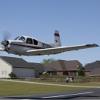Mice vs wing spars…prevention?
-
Members Online
- rbmaze
- Grant_Waite
- Rick Junkin
- Pinecone
- Will.iam
- Parker_Woodruff
- caa0428
- bluehighwayflyer
- MDMooney
- M20 Ogler
- EricJ
- SKI
- Cruiser73
- dkkim73
- Jim Peace
- gevertex
- GeeBee
- TCC
- Wingover
- Jimmyred
- christaylor302
- Mooney-TN
- eman1200
- cleland
- Aerodon
- Skyland
- mmcdaniel33
- Jim F
- FlyingScot
- Fix
- mluvara
- chrisburdzy98
- TheAv8r


Recommended Posts
Join the conversation
You can post now and register later. If you have an account, sign in now to post with your account.